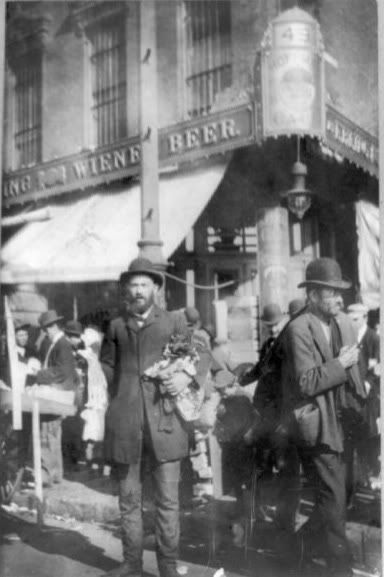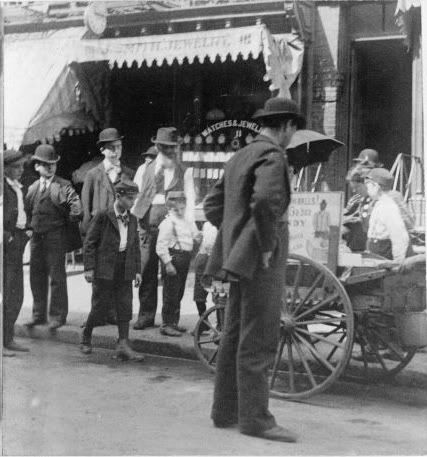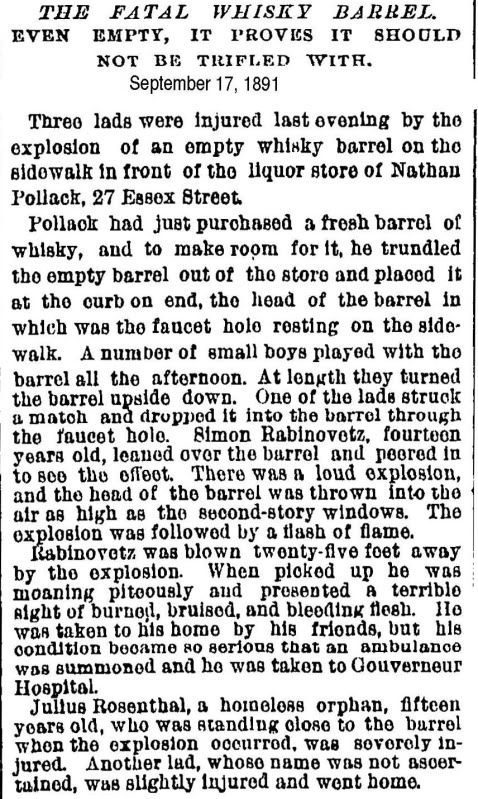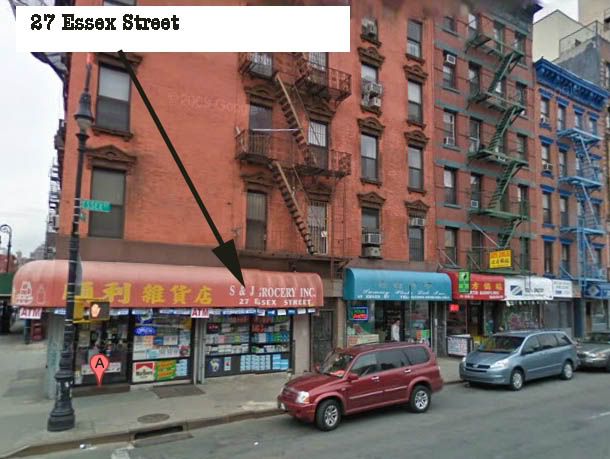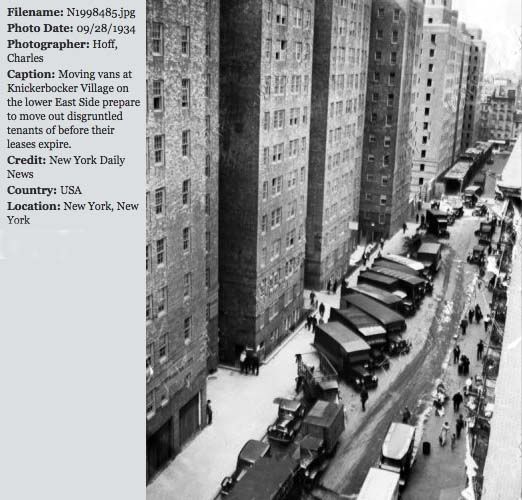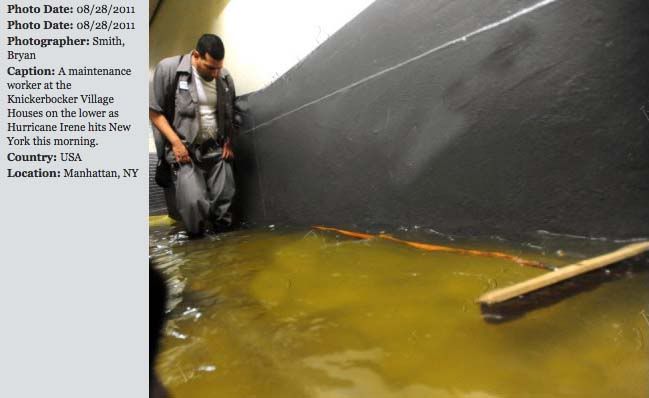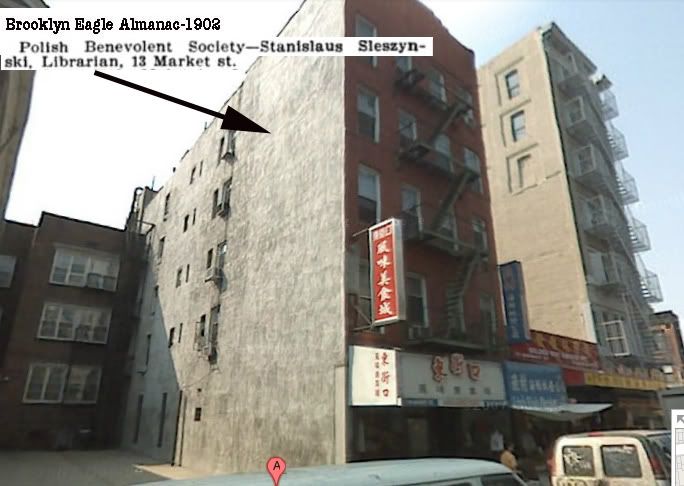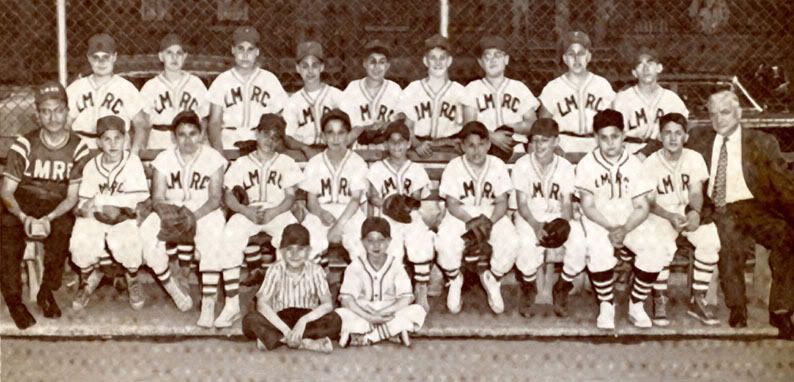Tuesday, December 20, 2011
Sunday, November 27, 2011
49 Hester Street 1910
This picture was taken just around the corner from 27 Essex Street where garbage was to accumulate a year later. The gentlemen in the foreground is selling socks just in front of the obligatory corner German bar of that era. In time, as the neighborhood would be more densely populated with different Eastern European immigrants, those bars would be less popular and merchant stores would predominate. In 1968, the artist Grace Hartigan would write that Henry's fruit stand which was then located at this address would inspire the painting of her "East Side Sunday." Note: Henry's, at that time, was next to Hollander's Pickles
11 Hester Street 1896
This block is now incorporated into the Seward Park housing site, completed in 1960 . It would be just east of the intersection of Suffolk and Hester. An 1891 real estate map would show a coal yard just north of the address. An up close view would show J. Smith selling watches and jewelry at number 11 and a man viewing a candy display featuring what appears to be boxes of candied balls at 5 cents a box. Some of the young boys are wearing civil war era hats also known as cheese-cutters due to its narrow, sharp brim. It evidently was popular at the time. In 1891 five barrel lots of rock candy went for 7 cents a pound.
Saturday, November 26, 2011
27 Essex Street: Then And Now
The then has a reference to the 1911 garbage strike. The notation in the picture incorrectly refers to PS 26. What is meant is PS 62 which was across the street on the eastern side of Essex at that time.
About the 1911 strike from secondat
An article in the New York Times gives some background. The men demanded that they be able to work during daylight hours, mainly for reasons of safety, and the Sanitation Department, which employed them, refused to grant this demand. A snide letter to the editor gives one person's reaction: The reason for the cleaners' strike Is plain to one who's smart; Like most of us they want to choose Their hours a la carte. The city hired strikebreakers and the work stoppage was soon brought to an end. Times letter writers saw the conflict as a test of power between the Teamsters Union and city government. Some supported the union and some supported government, but most simply wanted their ashes collected and the streets cleared of accumulating trash. LC's photos are from its Bain News Service collection. The garbage trucks of the day consisted of one man, one horse, one cart. The city operated more than 20,000 of them. I appreciate the dignity of the horses shown in the photos: alert, patient, and strong. The images seem to show a police force intent on preserving order without taking sides. In them the faces of strikebreakers show a lack of confidence, maybe just nervousness, maybe fear. The faces of the crowds in the street show everything from anger, to interest in the spectacle unfolding before them, to the well-known New Yorker's seen-it-all aloofness.What I gleamed from David Ziskind's One Thousand Strikes The workers were striking for a 48 hour week and relief from annoying regulations and arbitrary discipline. When any driver was found with garbage containing ashes, even though they may have been mixed by householders, the driver was fined several days pay.
Friday, November 25, 2011
Thursday, November 24, 2011
Saturday, November 12, 2011
13 Market Street: Former Site of the Polish Benevolent Association/Library
In the 1900 census Stanislaus Sleszynski lived at this site and also had a cigar store in the building.
Subscribe to:
Posts (Atom)

